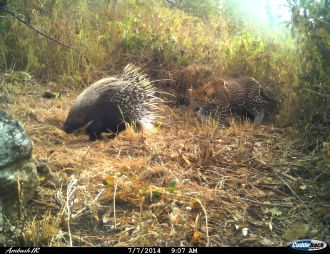News release
From:
Peer-reviewed; Observational study; Simulation/modelling study; Animals
Protected habitats aren’t enough to save endangered species
Models show tropical species are impacted by far-off threats on the landscape
In tropical forests, endangered species inside protected habitats are still in danger from threats from beyond their sanctuaries, according to a study published February 13th in the open-access journal PLOS Biology by Ilaria Greco and Francesco Rovero of the University of Florence, Italy, and colleagues.
Tropical forests contain the majority of Earth’s biodiversity, but they are also home to high concentrations of threatened species. Worldwide, governments are committing to establishing more protected wildlife areas through initiatives like the Kunming-Montreal Global Biodiversity Framework, but there is evidence to suggest that species within such protected areas might still be impacted by threats outside these borders. In this study, Greco and colleagues assess how mammalian communities are impacted by wide-ranging anthropogenic impacts.
The researchers collected data from nearly 560,000 camera-trap images of 239 mammal species in tropical forests in Asia, Africa, and the Americas. In each area, they measured the richness and distribution of the mammalian community and tested how those metrics responded to human population density and habitat disturbance in surrounding areas. Human population density had a strong effect on the number of mammal species in an area. Even with the wildlife restricted within a protected area and the human population outside, the study’s model predicts a 1% decline in species richness for every 16 persons per square kilometer on the surrounding landscape. Mammal communities were also negatively impacted by forest loss and fragmentation within 50 kilometers of their forest homes.
These results show that communities within a protected habitat can still be negatively impacted by anthropogenic disturbances in the wider surrounding landscape. The authors suggest that establishing protected areas alone is not sufficient to conserve wildlife, and that these efforts can be complemented with broader measures such as preventing wide-scale forest loss and restoring habitat connectivity across the landscape.
“Our results”, says Ilaria Greco, “suggest the existence of anthropogenic extinction filtering acting on mammals in tropical forests, whereby human overpopulation has driven the most sensitive species to local extinction while remaining ones are able to persist, or even thrive, in highly populated landscapes and mainly depend on habitat cover.”
“The study warns that conservation of many mammals in tropical forests depends on mitigating the complex detrimental effects of anthropogenic pressures well beyond protected area borders,” adds Francesco Rovero.
Multimedia






 International
International



